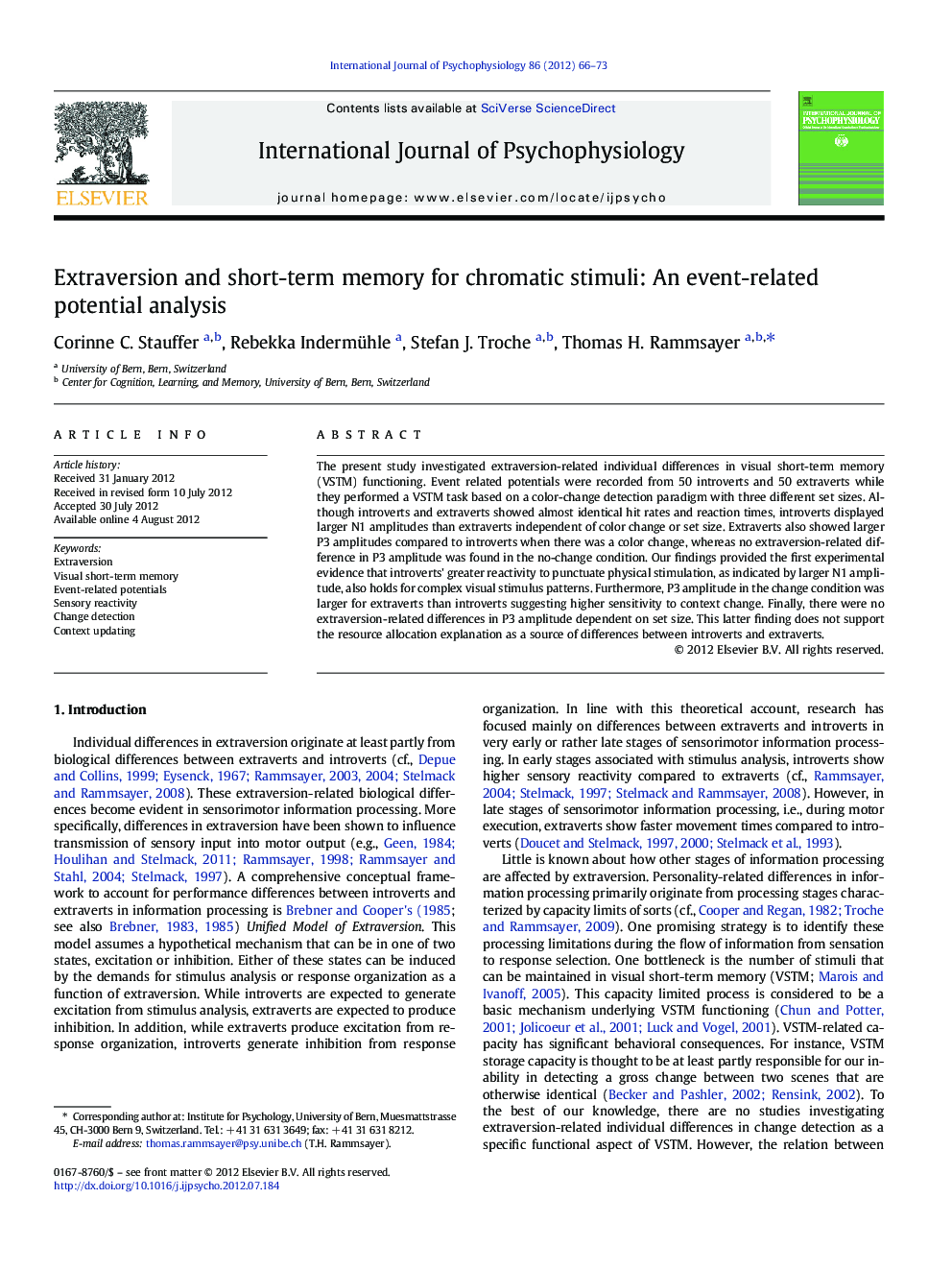| Article ID | Journal | Published Year | Pages | File Type |
|---|---|---|---|---|
| 931230 | International Journal of Psychophysiology | 2012 | 8 Pages |
The present study investigated extraversion-related individual differences in visual short-term memory (VSTM) functioning. Event related potentials were recorded from 50 introverts and 50 extraverts while they performed a VSTM task based on a color-change detection paradigm with three different set sizes. Although introverts and extraverts showed almost identical hit rates and reaction times, introverts displayed larger N1 amplitudes than extraverts independent of color change or set size. Extraverts also showed larger P3 amplitudes compared to introverts when there was a color change, whereas no extraversion-related difference in P3 amplitude was found in the no-change condition. Our findings provided the first experimental evidence that introverts' greater reactivity to punctuate physical stimulation, as indicated by larger N1 amplitude, also holds for complex visual stimulus patterns. Furthermore, P3 amplitude in the change condition was larger for extraverts than introverts suggesting higher sensitivity to context change. Finally, there were no extraversion-related differences in P3 amplitude dependent on set size. This latter finding does not support the resource allocation explanation as a source of differences between introverts and extraverts.
► No extraversion-related differences in VSTM functioning at the behavioral level. ► Introverts showed larger N1, extraverts larger P3 amplitudes. ► Introverts' greater sensory reactivity also holds for complex visual patterns. ► Extraverts are more prone for the detection of a context change than introverts.
